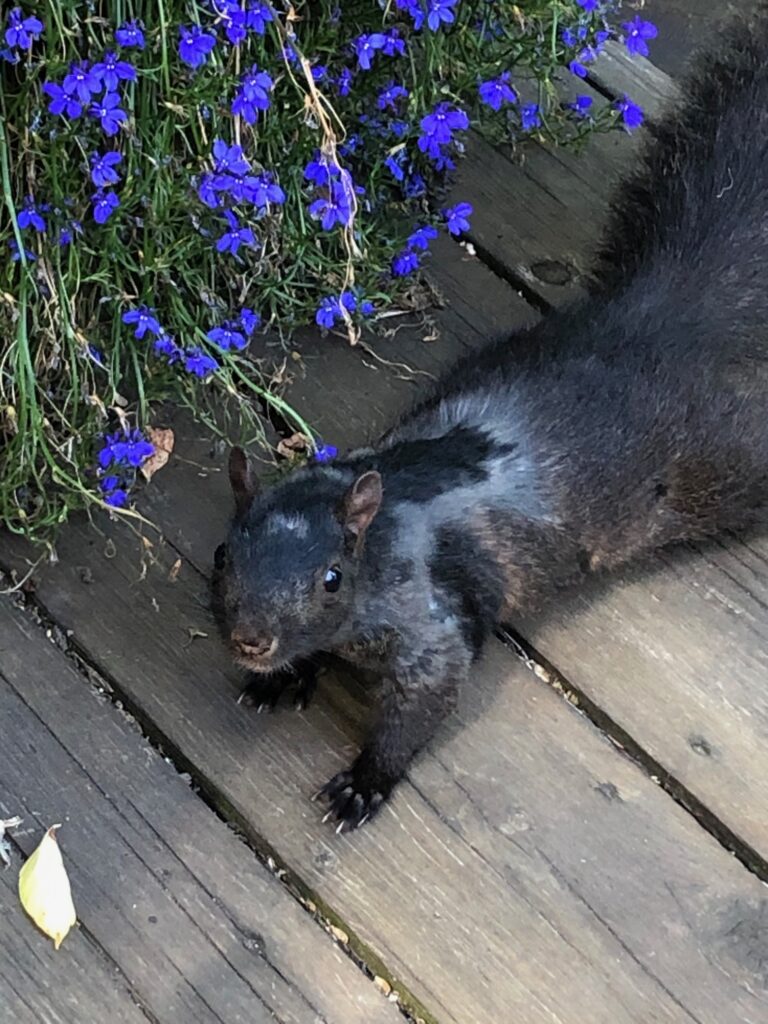Category: City Animals
Today’s small joy: this lovely companion decided to hang out on my computer as I work
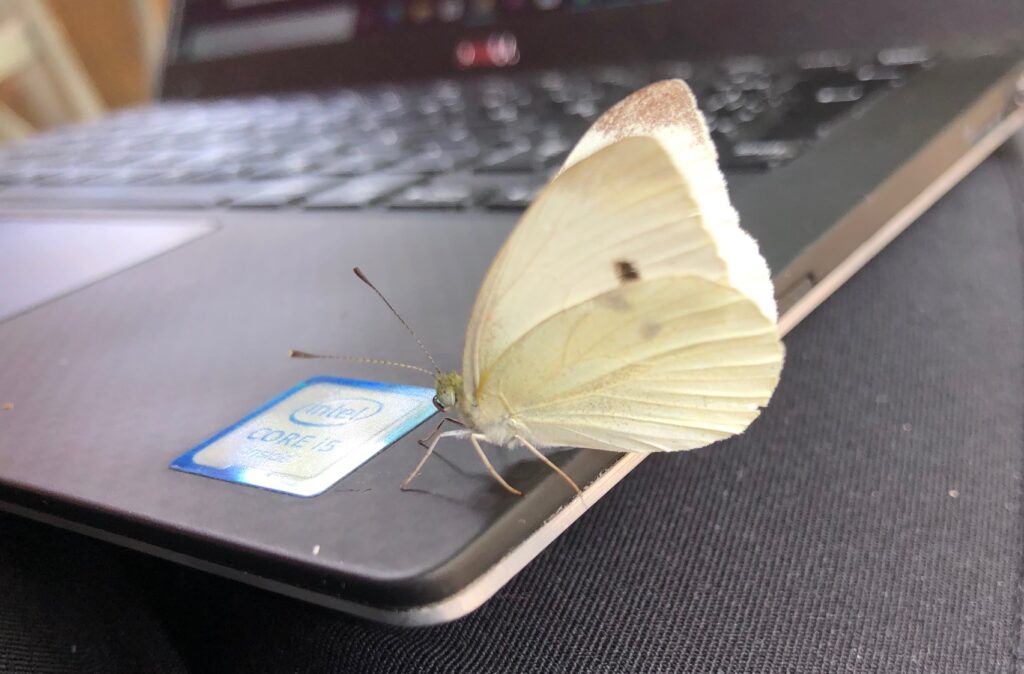
Couple out for a morning walk together
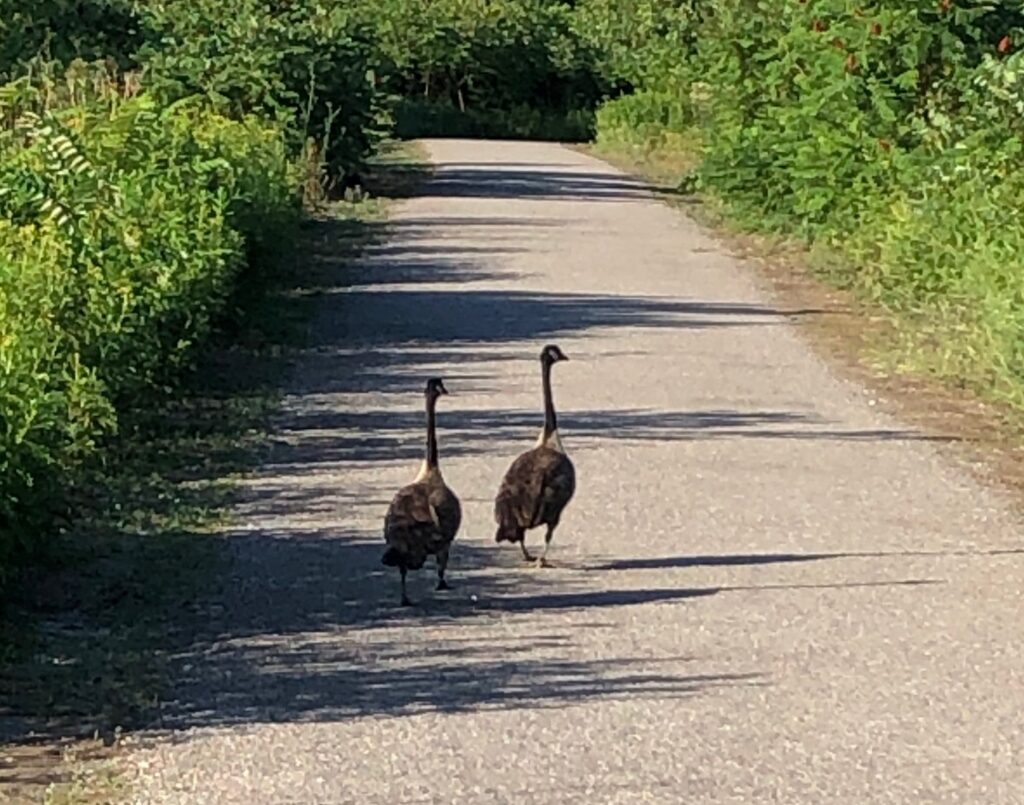
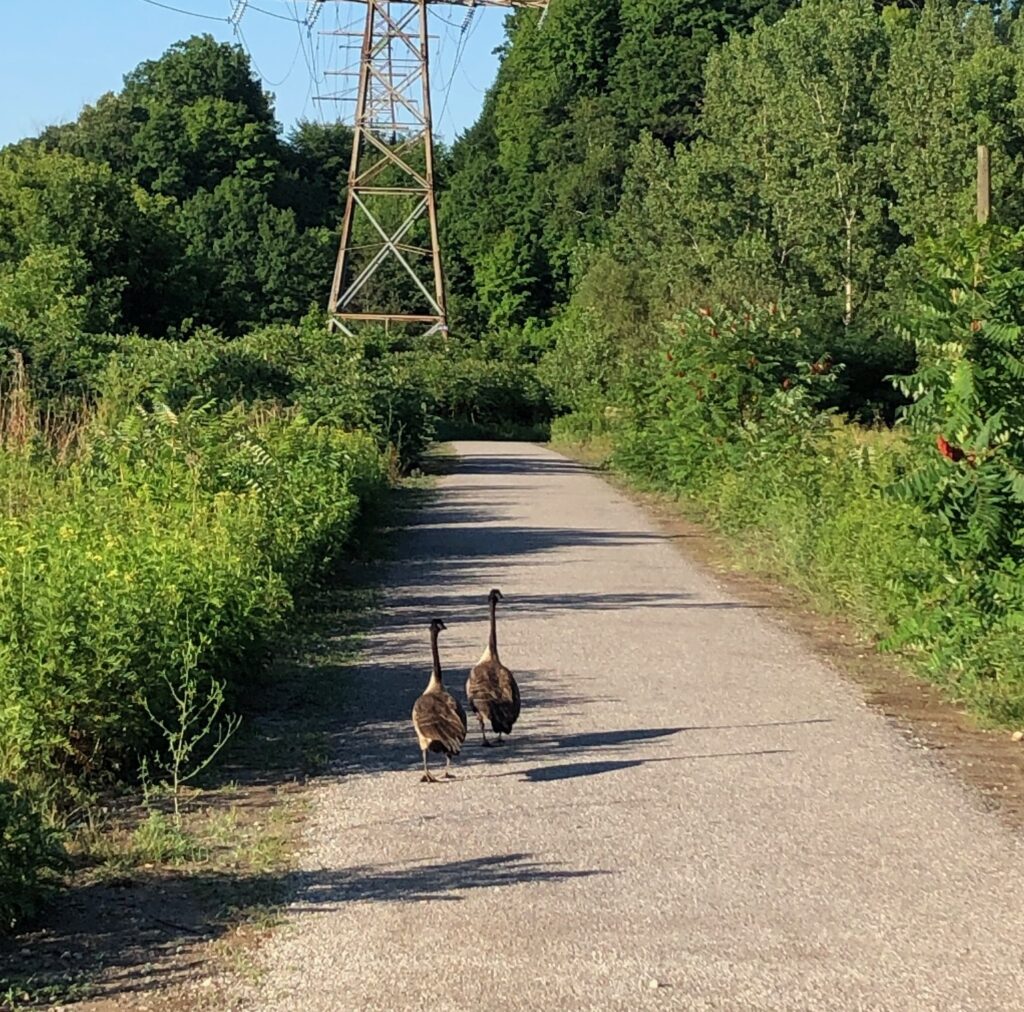
Today’s small joy: coming out of a fab hike through Crothers Woods and seeing this couple out for a morning walk together on the Sun Valley trail.
Baby Groundhogs in Toronto Park
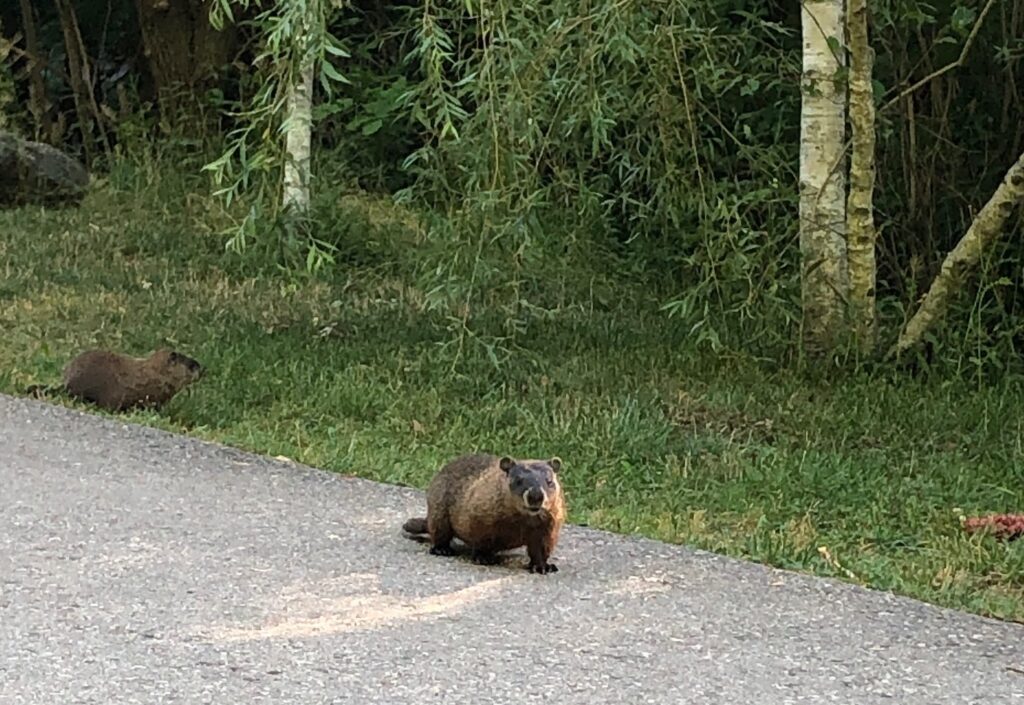
These little groundhogs were out exploring this morning when my friend Zoe and I were happily surprised to come across them on the path in Wilket Creek Park. A young mother and her toddler had stopped to watch the baby groundhogs, too, though they didn’t know what the little animals are.
These juveniles must have emerged from their underground burrow within the last couple of weeks. They were likely born in May, and then started to explore the world of this park, their home, at about 6 weeks old. So that would have been around early July.
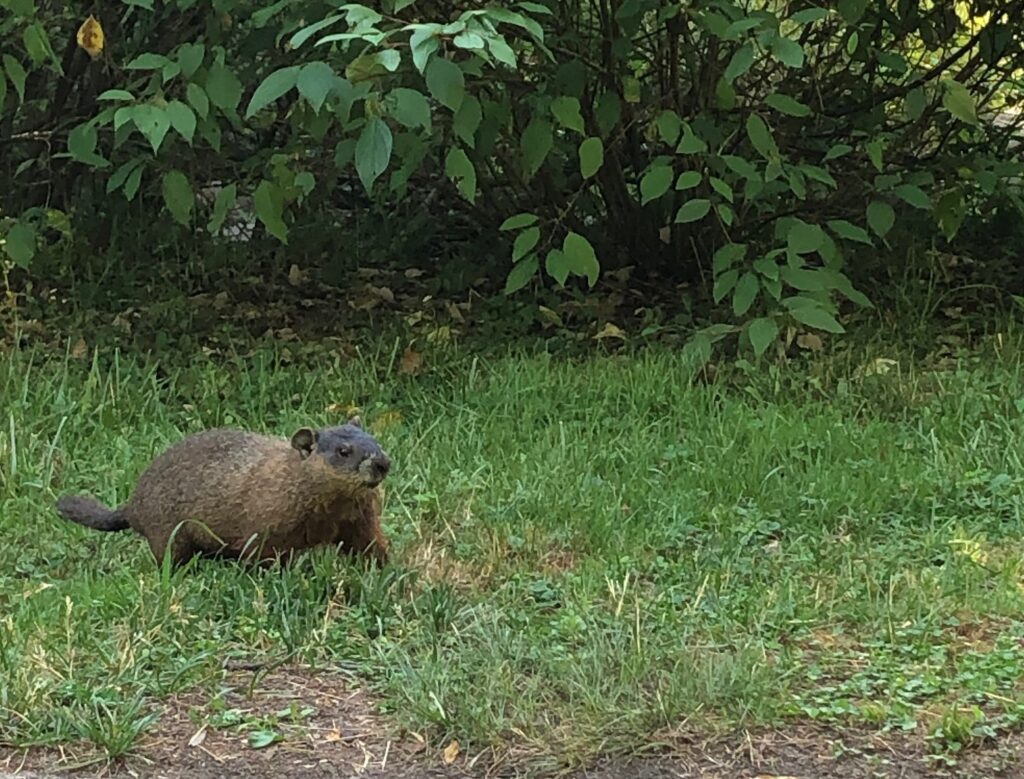
Also called woodchucks, yes, as in “how much wood would a woodchuck chuck, if a woodchuck could chuck wood…,” whistle-pigs, or land-beavers, they are part of the family of mammals that includes squirrels and chipmunks. In a segment of that family, the marmots, only beavers and porcupines are larger than groundhogs.
When not enjoying some sunshine, groundhogs are usually underground in their well-designed burrows, which are complete with bedrooms, specially designated bathrooms, spy holes, and entrance and exit.
“All sorts of animals are able to thrive because of the shelter supplied by woodchuck holes. The list includes a wide variety of fur and game animals, some of which destroy huge quantities of farm pests, such as rats, mice and insects. Skunks, raccoons, foxes, rabbits, and snakes all take shelter in woodchuck holes,” according to the Canadian Wildlife Federation.
We were lucky to see these little ones out and about in the sunshine at around 9am since, although they are daytime animals (diurnal), they are most active early mornings and early evenings.
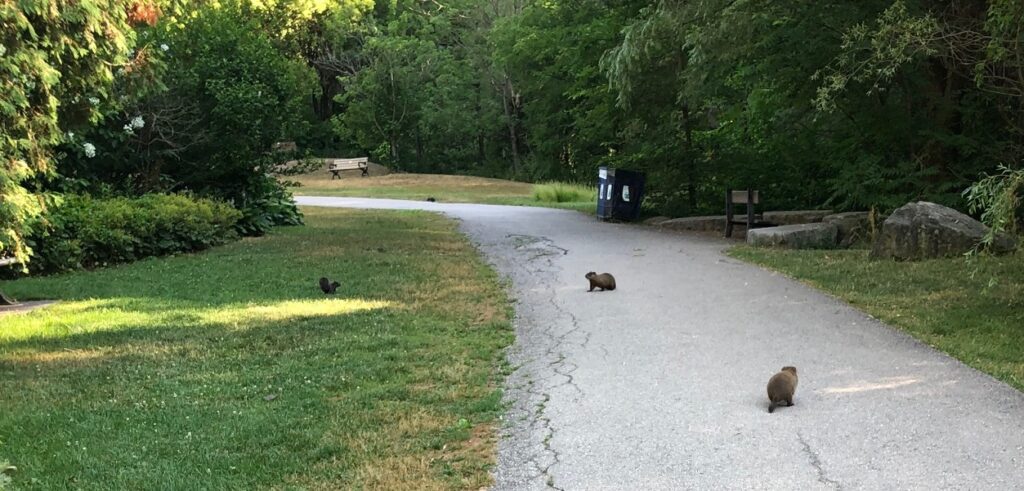
Groundhog baby and squirrel checking eachother out. Photo by Heather Kelly.
Today’s back yard hangout with a friend
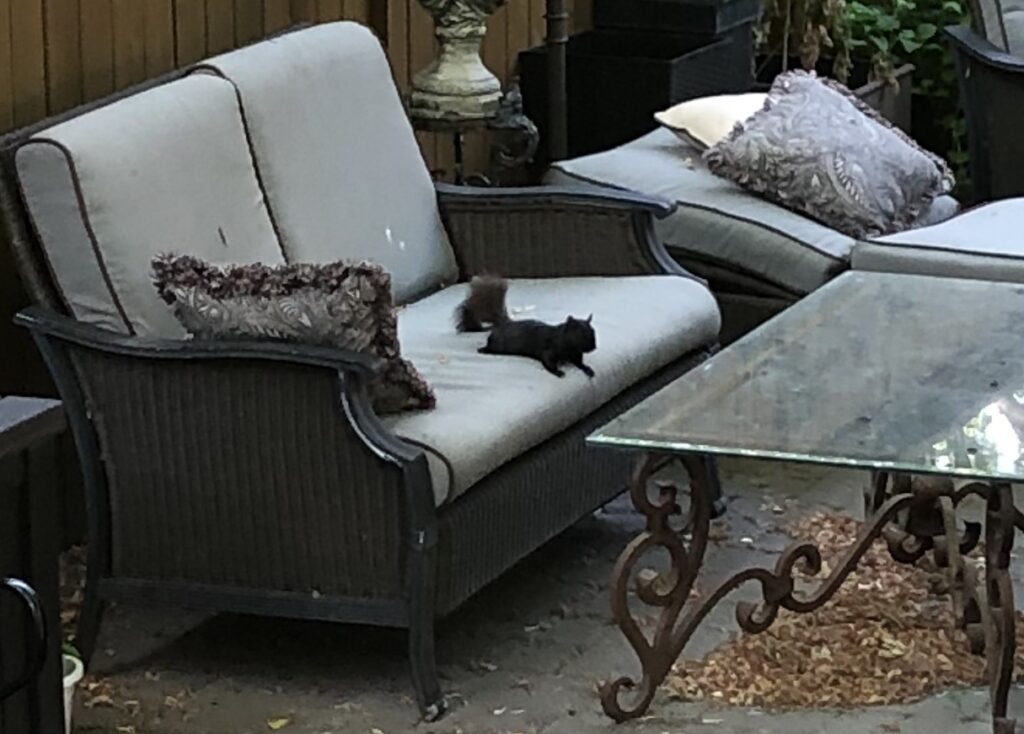
Today’s small joy: A physically distanced back yard hangout with a friend. Whose back yard it is might be a matter of perspective … I tend to think of it as ‘our’…
Today’s small joy: a little (mischievous) friend
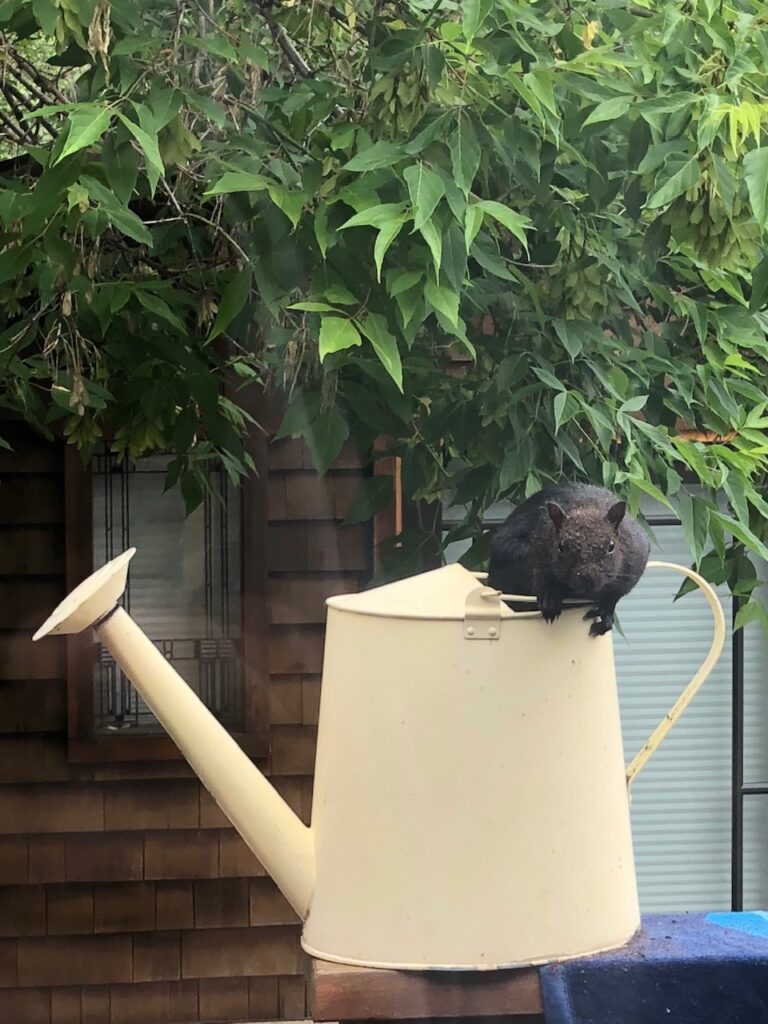
Today’s small joy: a little (mischievous) friend to greet me as I came outside for my early morning write
Meeting Baby in the Park
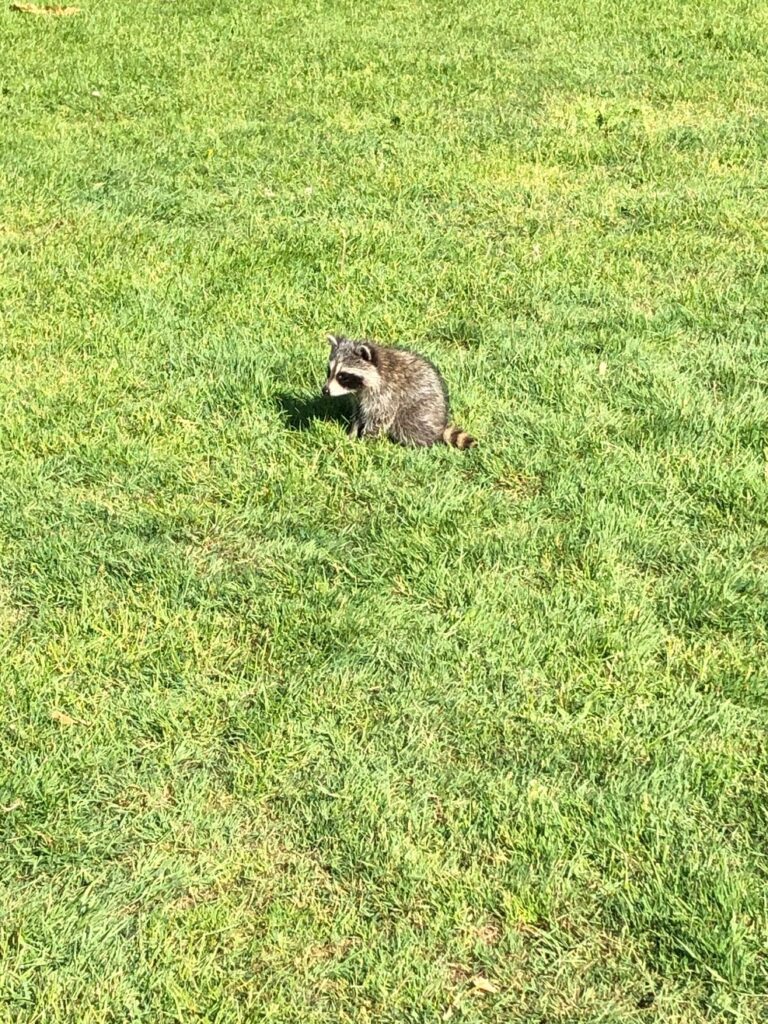
This little cutie was the joyful and worrisome adventure of the morning.
Baby raccoon was asleep in the middle of a busy path, in the middle of a busy park. Claire, a woman on her morning run, found baby and moved her to a safer spot on a side path in the shade. That’s where I came across them.
I met Claire and this sweet baby for the first time at that moment. We discovered that Claire and I are both rabies vaccinated, and comfortable though cautious with the young raccoon. Claire is a veterinarian with more than a decade of experience mostly with cats and dogs, and I have experience caring for baby raccoons once they are accepted into a rehab/rescue facility. But neither of us felt sure about the best thing for baby, here in the park.
Claire had called 311. I called the Toronto Wildlife Centre. I knew that the TWC is currently full – over capacity with so many baby raccoons – and not accepting more. But I called to get advice about the best thing to do for baby.
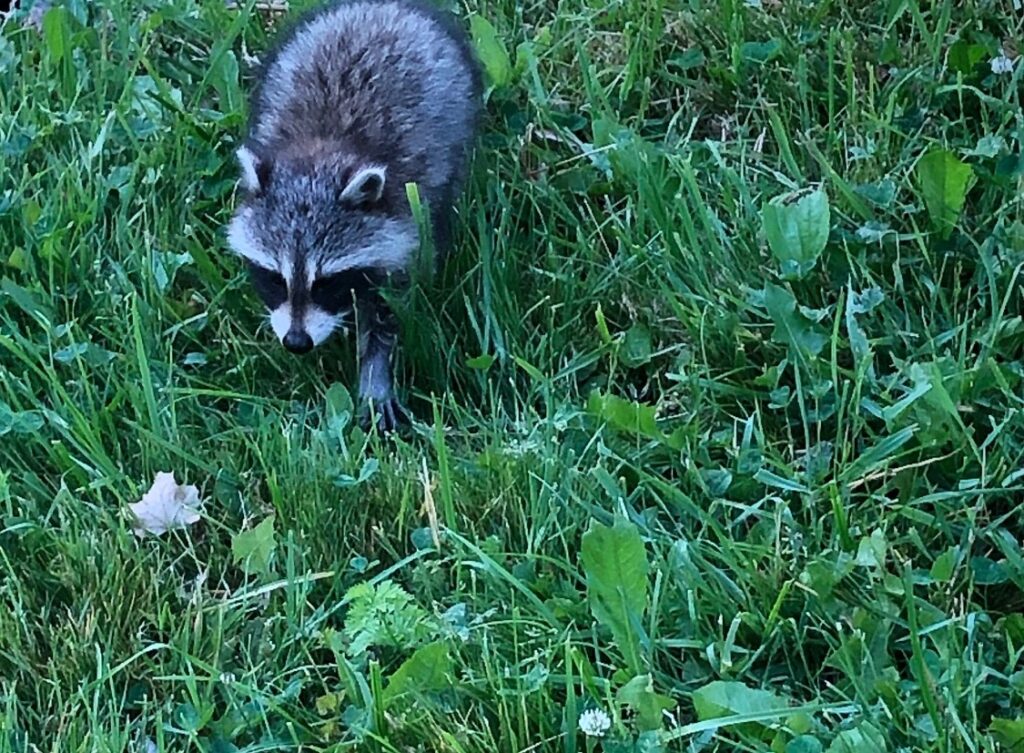
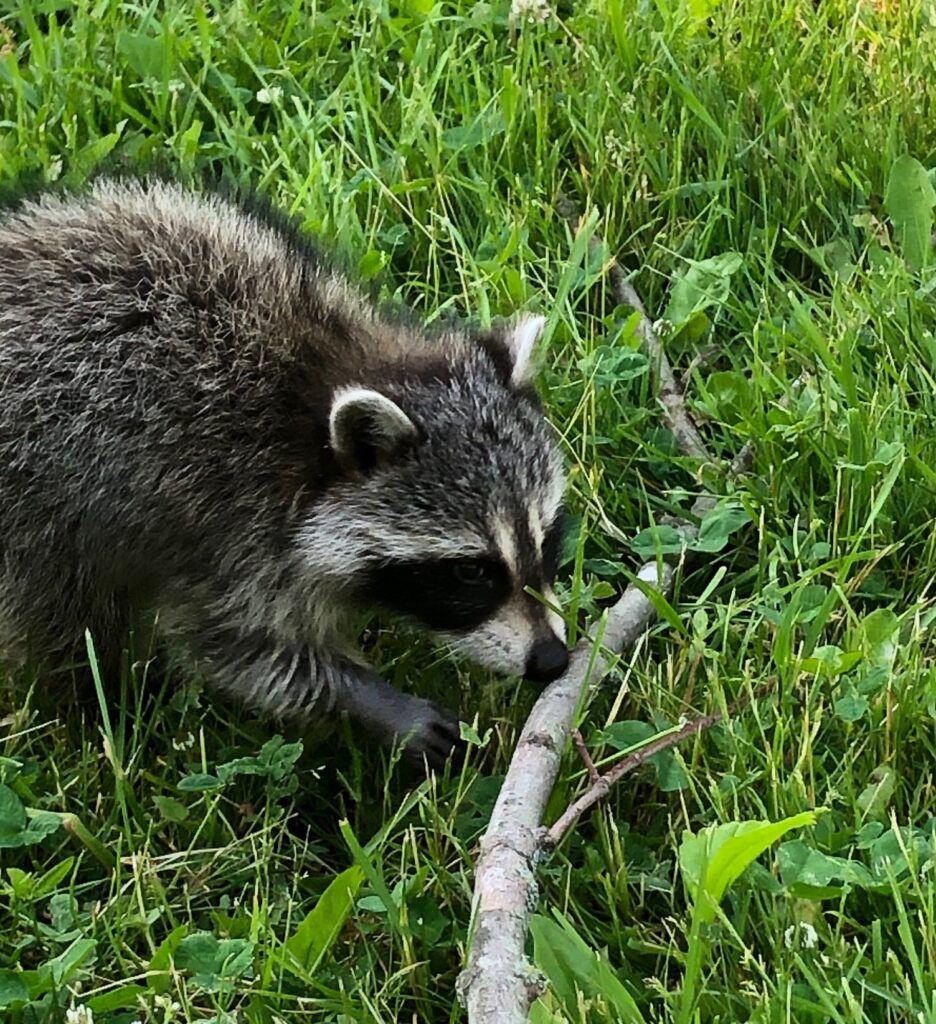
Baby was way too fearless around people. Possibly habituated to people, possibly a starving orphan looking for someone to feed her. She would waddle right up to anyone. Sniff their shoes. Keep looking.
As we waited, we watched over baby to keep her safe from dogs and cyclists. We were joined by a friendly cyclist and his curious dog (ironically), who was enthralled with baby and wanted to help. We were also watched and commented to by many, many other people in the park.
Claire and I talked (physically distanced) about what would be the best thing to do for baby – take her with us or put her somewhere in the park further away from people?
Here is what Toronto Wildlife Centre advises if you ever find a baby raccoon all alone:
“Sometimes baby raccoons can fall out of a nest or get separated from their mother. If the baby isn’t injured, getting it back to its mom is the best possible option. Raccoons are excellent mothers and will come back for their babies if given a chance! Raccoon moms will also take much better care of their babies than any human possibly could.”
“Place the box with the raccoon (and a heat source) as close as possible to where the raccoon was found. If there is a tree nearby, put it at the base of the tree. Raccoons don’t always nest in trees, so next to a house or building will work too.”
“MYTH! If you touch a baby raccoon, its mother will NOT abandon it. Raccoons are excellent moms. All they want is their baby back.”
“In very busy areas, it may make more sense to bring the baby inside and keep it somewhere dark and quiet for the day. As soon as the sun starts to set and traffic dies down, get it outside right away. No matter what, make sure to leave baby raccoons out for their mother for at least one whole overnight period.”
TWC even has a great sign that people can print and place with the baby in the box, available online.
“In high traffic areas, you can put a sign on the box to let other people know that the raccoon is waiting for its mother. Here’s one you can print off: https://www.torontowildlifecentre.com/wp-content/uploads/2015/04/I-Am-Waiting-for-My-Mother-Sign.pdf “
If you are someone (like me) who might think for a moment about taking a baby raccoon home and caring for it until it can fend for itself and be released, here is good info from the TWC:
“Baby raccoons need specialized formula, species-specific housing, and medical treatment that you cannot provide at home. They also have to be raised with other baby raccoons to learn the social behaviours they need to survive in the wild. It is illegal to keep any wild animal at home without a permit for longer than 48 hours. Please contact a wildlife rehabilitator right away for help with the baby raccoon you have found.”
Ultimately Claire and I took baby back to near where she was found, and placed her in a spot deep in the bushes, away from the busiest paths – where hopefully her mama will find her.
On top of it all, it turns out that today is Claire’s birthday. What a birthday adventure!
How to be Focused and Industrious
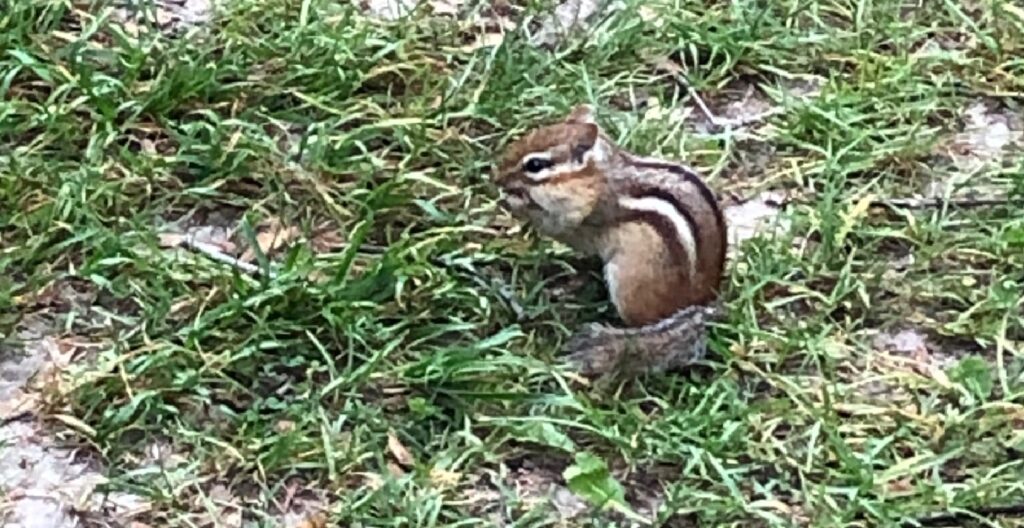
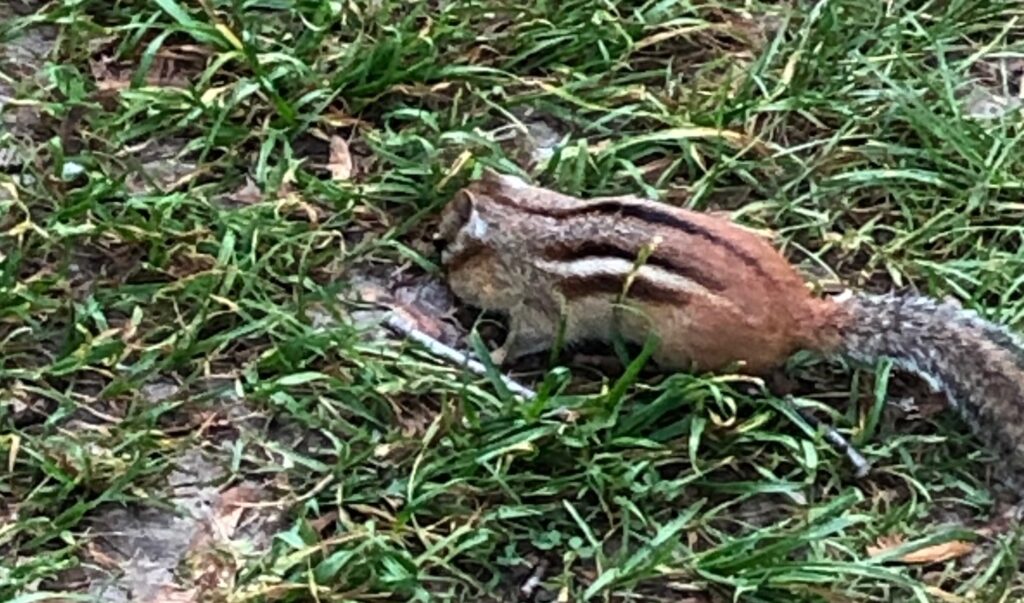
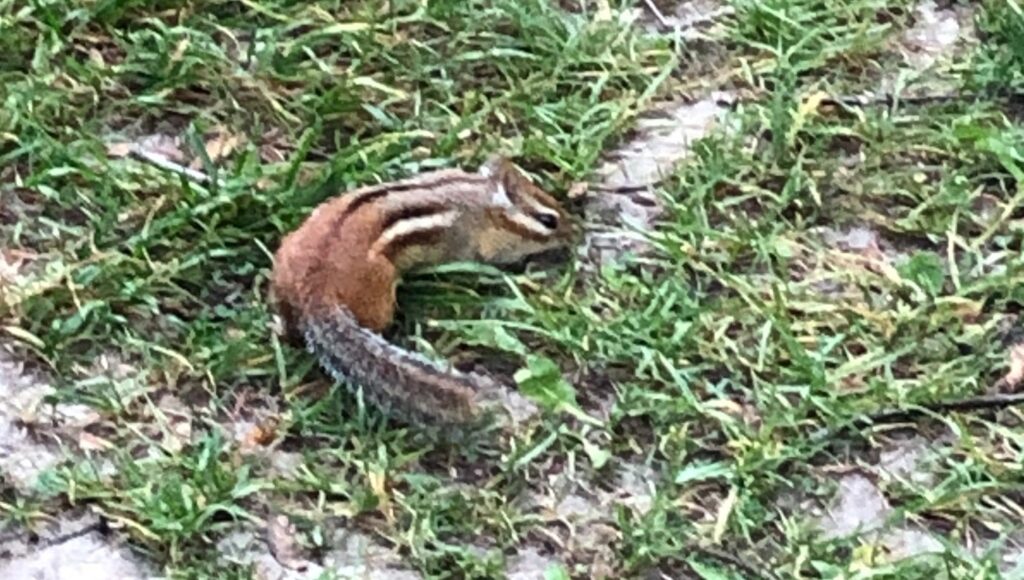
This little chipmunk barely noticed as I walked strangely close to it – we were on each other’s path. He/she was there first, deeply focused on the task at hand. I have no idea what that task was, but the relentless industriousness was inspiring. I’d love to be that deeply into my work first thing each morning.
Can you spot him/her here?
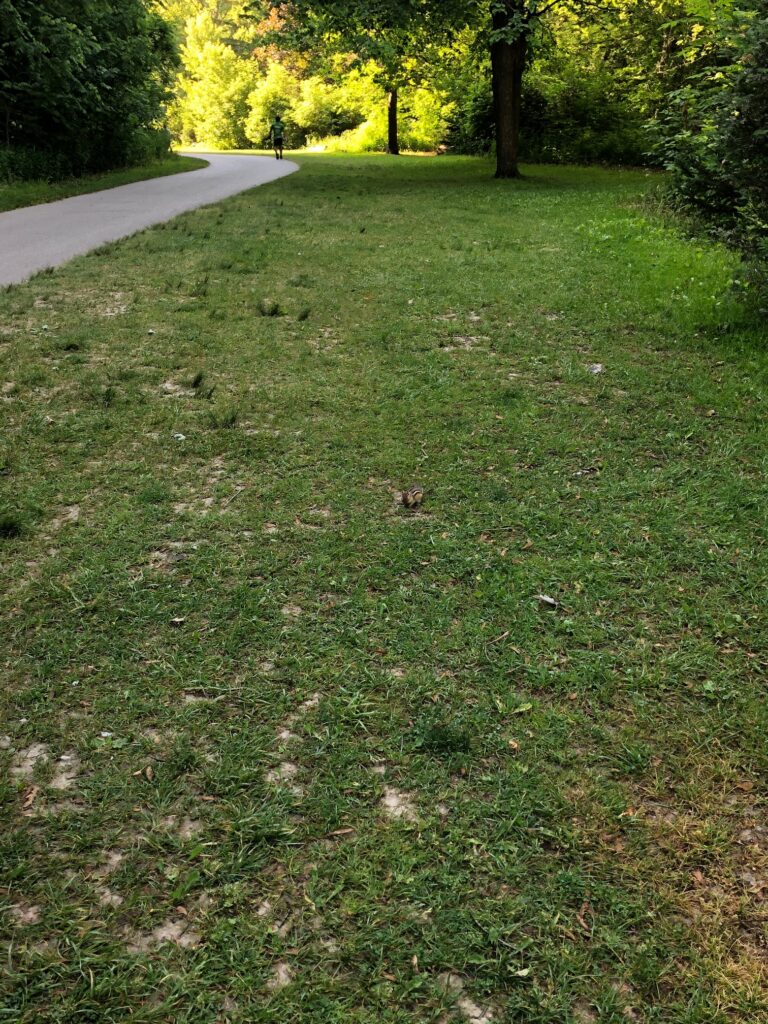
Meet Greysie. Master of Cuteness.
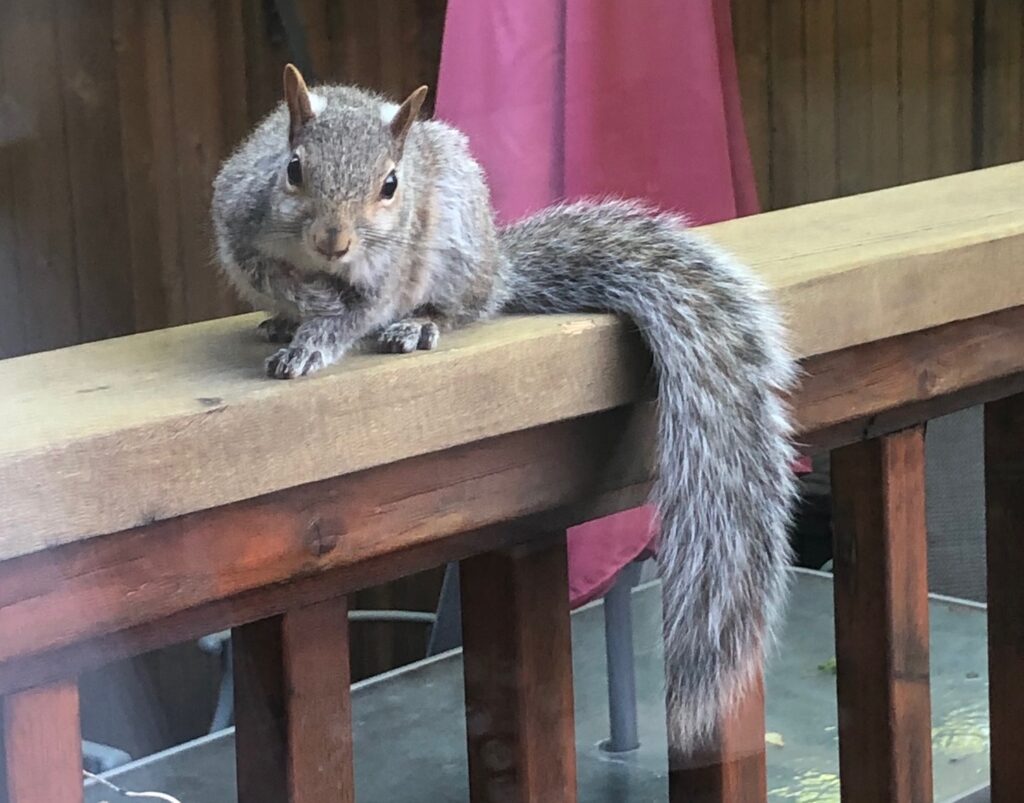
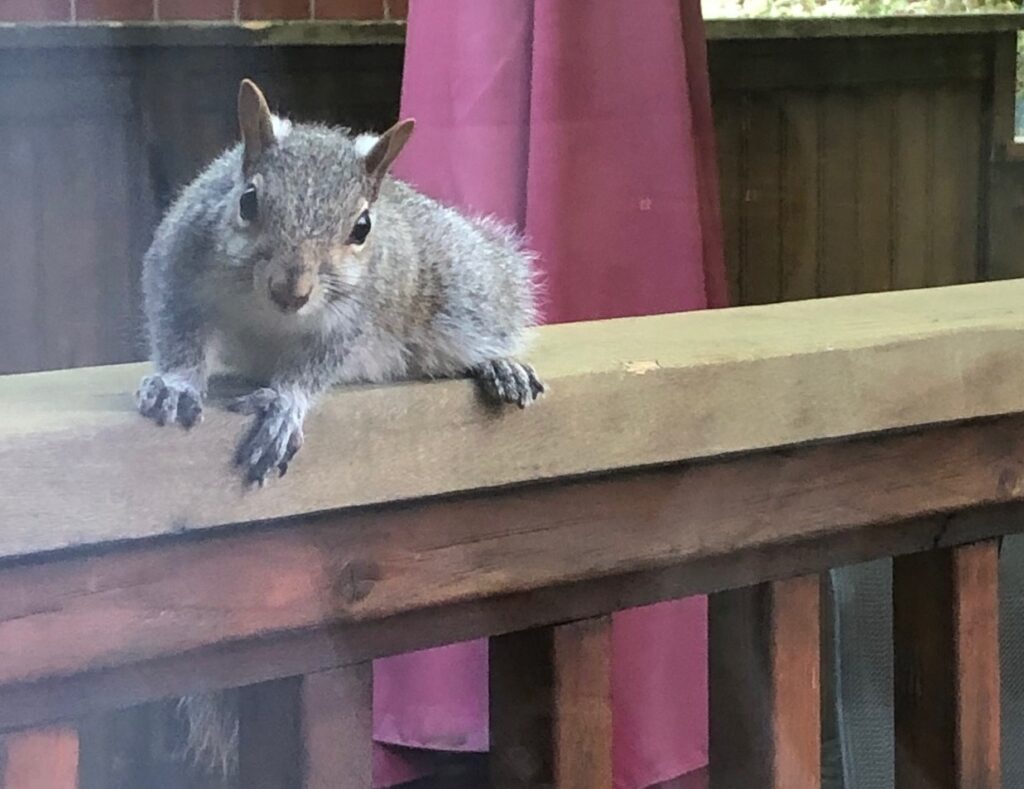
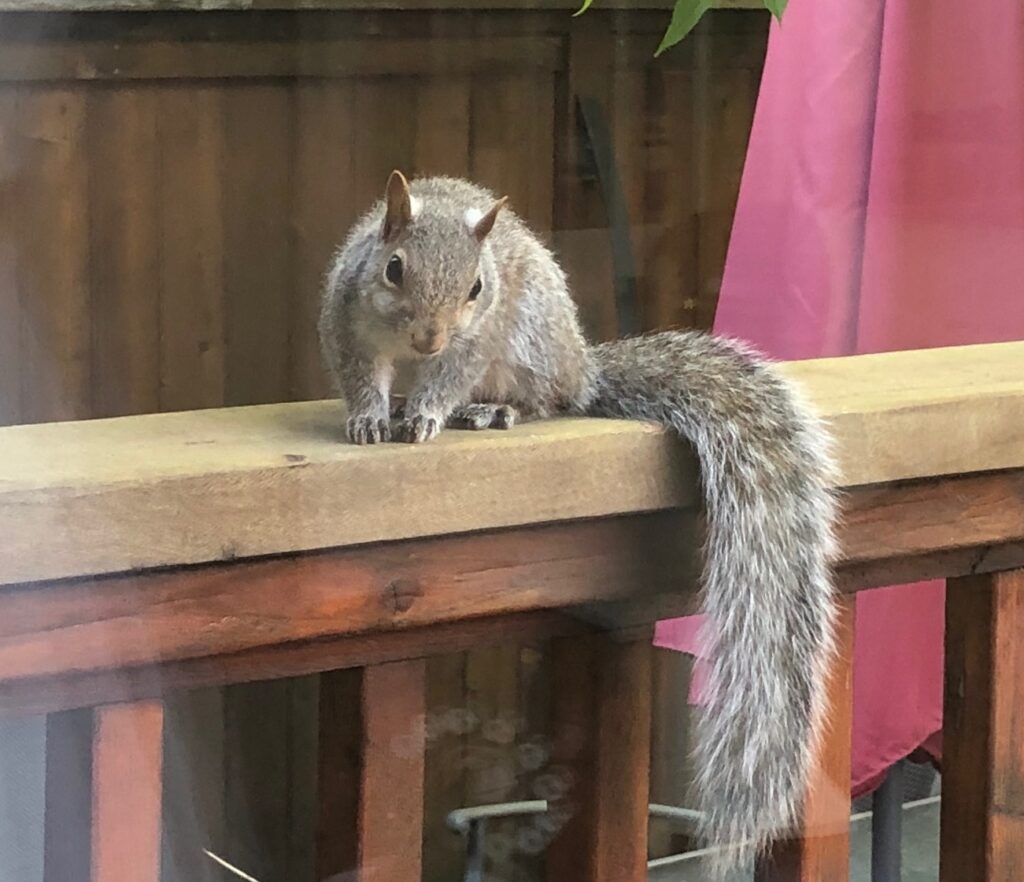
This beauty is little Greysie May. She is a frequent visitor to my back yard. Greysie is a little more timid in her leaps and scampers than the other squirrels. I suspect because she is smaller. And she’s not always the most on the ball, really. But she is a fantastic model, as you can see.
I can tell Greysie May apart from the other grey squirrels thanks to the adorable white stripes of fur behind her ears. What looks like little white tufts are actually small stripes. And she is more white-grey than Baby Grey (her sibling) or Gradie, my other grey squirrel neighbour, who both have more auburn colouring in his fur.
Little Graysie is one of Mimi’s babies.
I first discovered that her sibling, Baby Grey, was one of Mimi’s babies because Mimi would allow Baby Grey to climb on and around her. Then I saw that Baby Brin was one of Mimi’s as well. And finally, the last to come to my home – and the last I realized was one of the family – is this beautiful little Greysie.
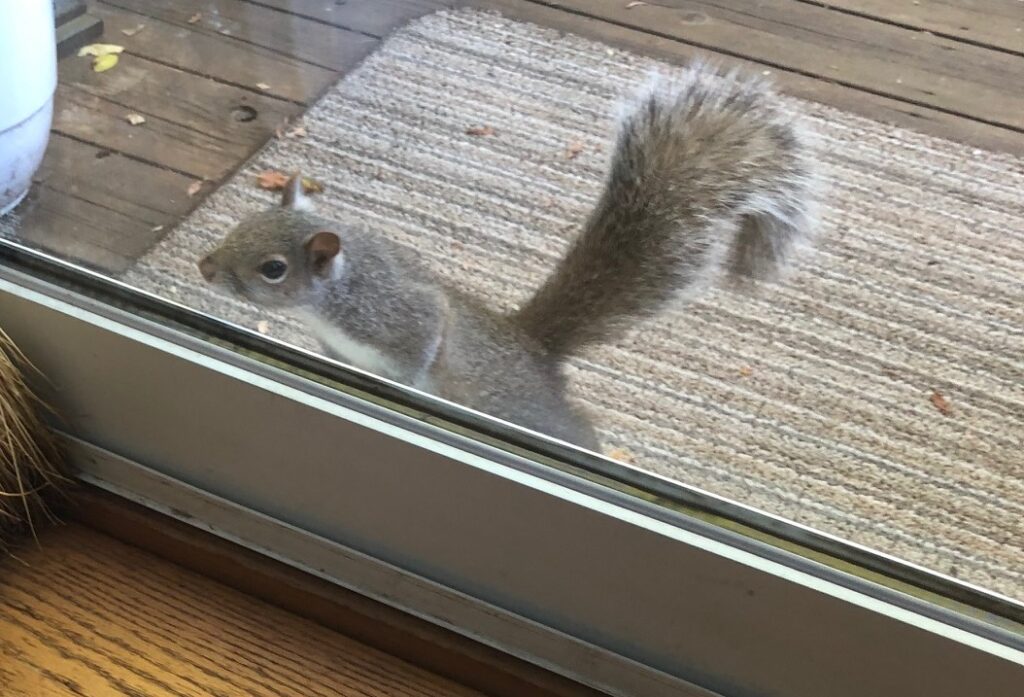
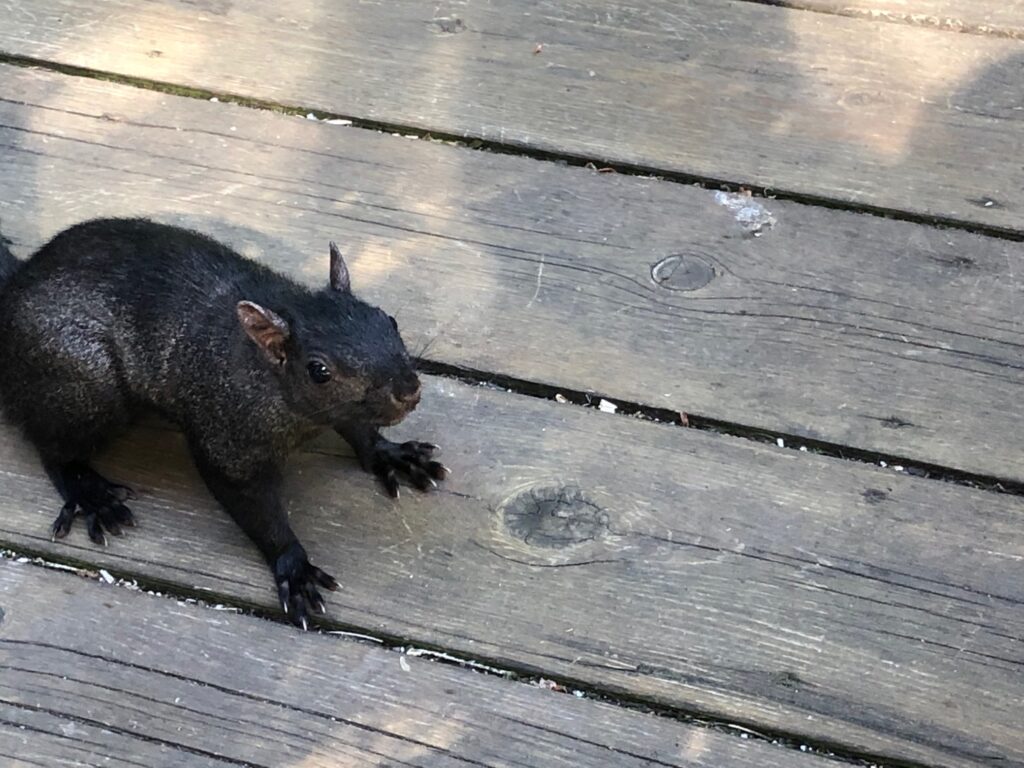
Photo by Heather Kelly.
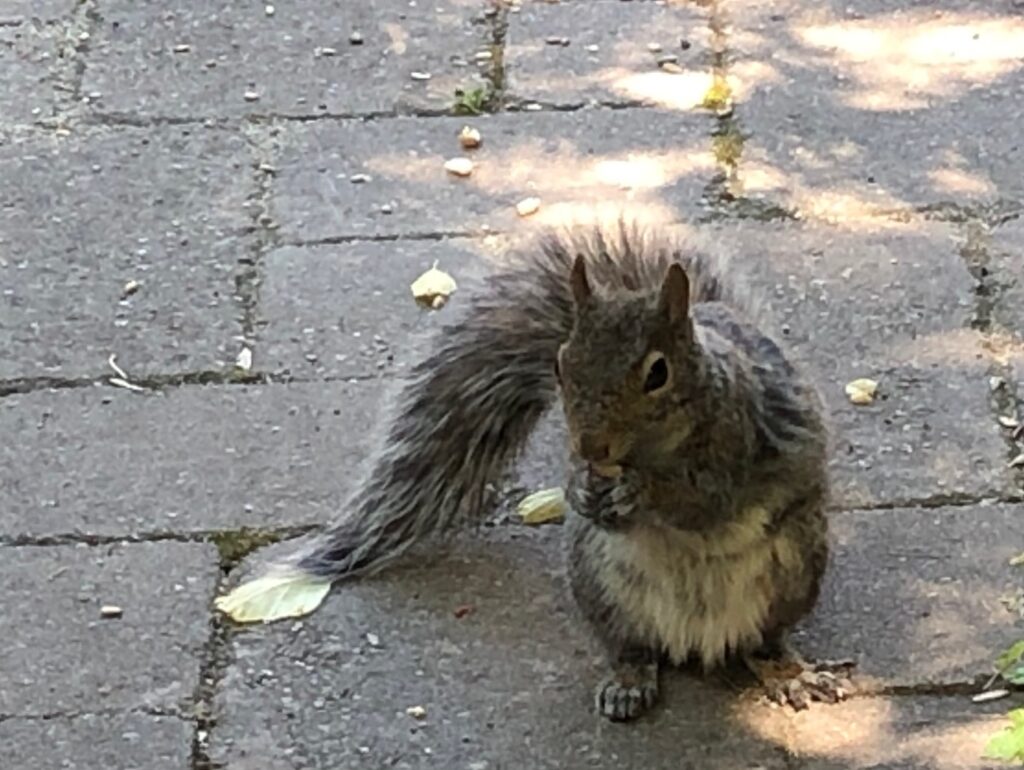
Photo by Heather Kelly.
Mimi’s Mama Vest
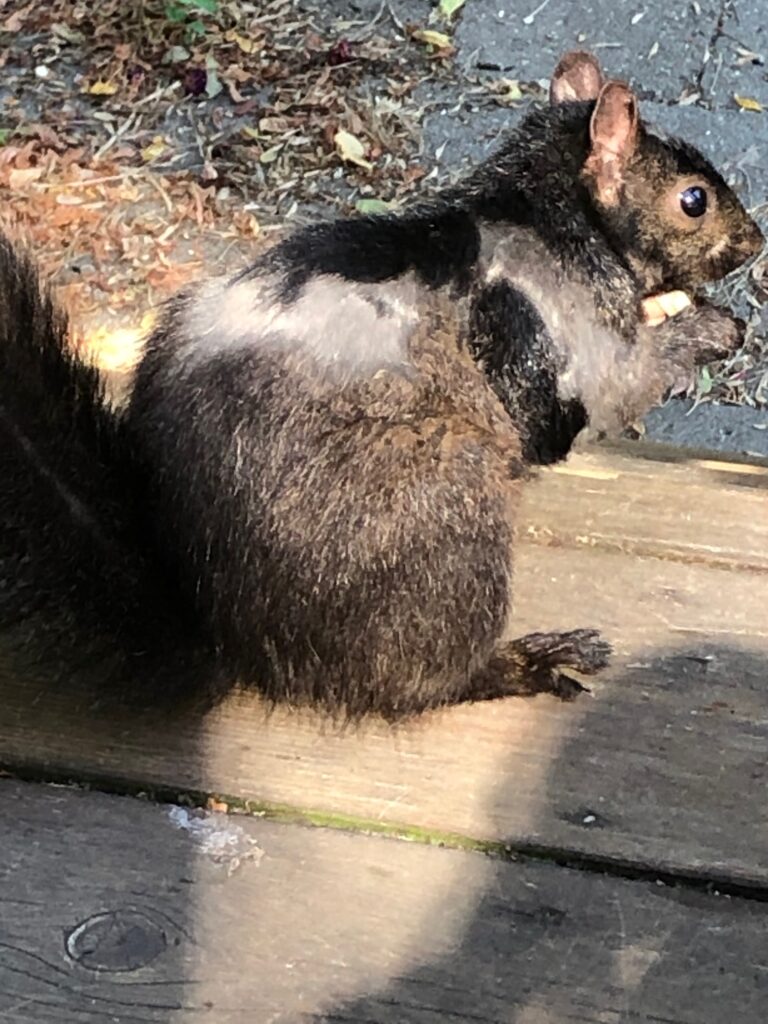
When I first met Mimi a few months ago (in my back yard), it was clear that she was a nursing mama. Her teets were obvious when she sat on her hind legs, bare of fur, and her body was larger than most of my other squirrel neighbours.
At first when I noticed her fur markings I wondered if she might have mange or a condition of some sort. But as I got to know her, and see her almost every day, it was clear she was healthy and mange free. She has a mama vest!
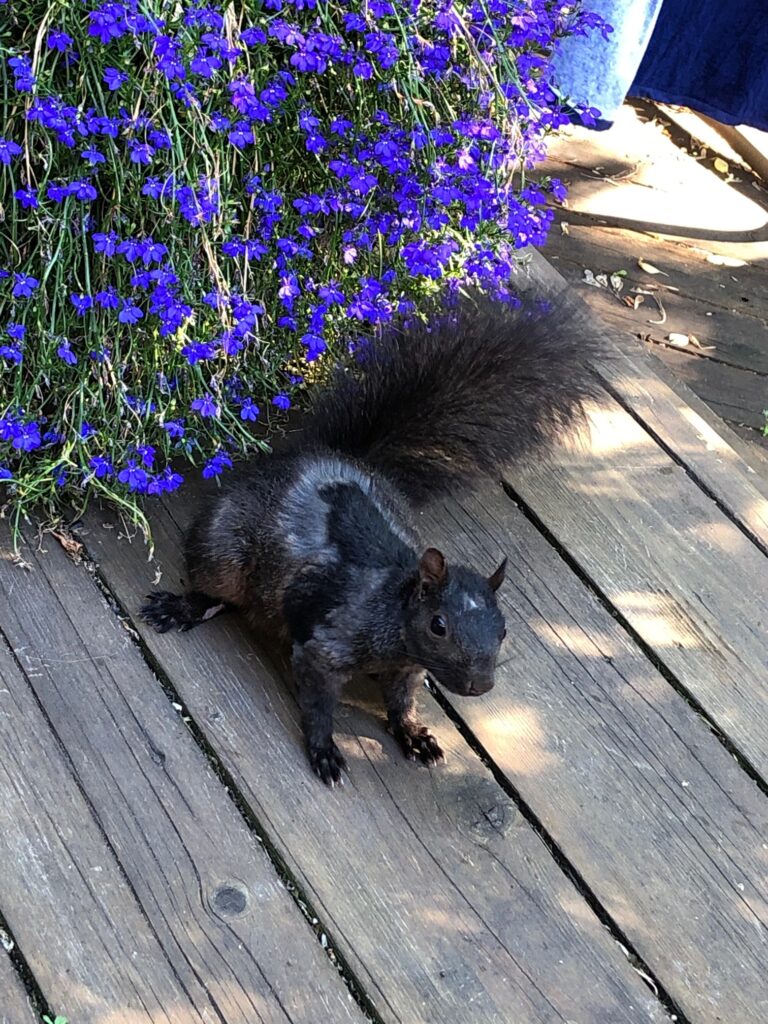
Mama squirrels pull out their own fur to line their nest. The fur ensures that their babies stay warm and dry on cold spring and autumn nights.
Think about that for a sec. Can you imagine pulling out your own body hair to line your baby’s crib?!?? Not just grooming ones self and saving what gets brushed out, but actually pulling out your own healthy fur. Wow.
So, of course, I looked into it. Do other animals do that, too? Sure, you might think of birds nests having feathers in it, but I would not have imagined that the birds pluck their own bodies to prep their nests. And what about other furry mammals, like raccoons, bears, coyotes, foxes, and skunks – do they pull out their own fur, too?
There appears to be a lot of info about pregnant bunnies pulling out their fur. Mostly from worried pet owners looking for advice. And there is info about the common mental health condition called trichotillomania, where humans and other animals pull out their own hair or fur due to stress and anxiety.
But there seems to be very little to no publicly available research about the phenomenon of pulling out ones own fur lovingly, instinctually, to prep to care for babies.
Apparently some birds will use brushed out dog or cat hair to line their nests, and some people put their pet hair brushings outside for the birds to use. (I never would have thought of that.)
If I come across more insight about it, I’ll share the info with you.
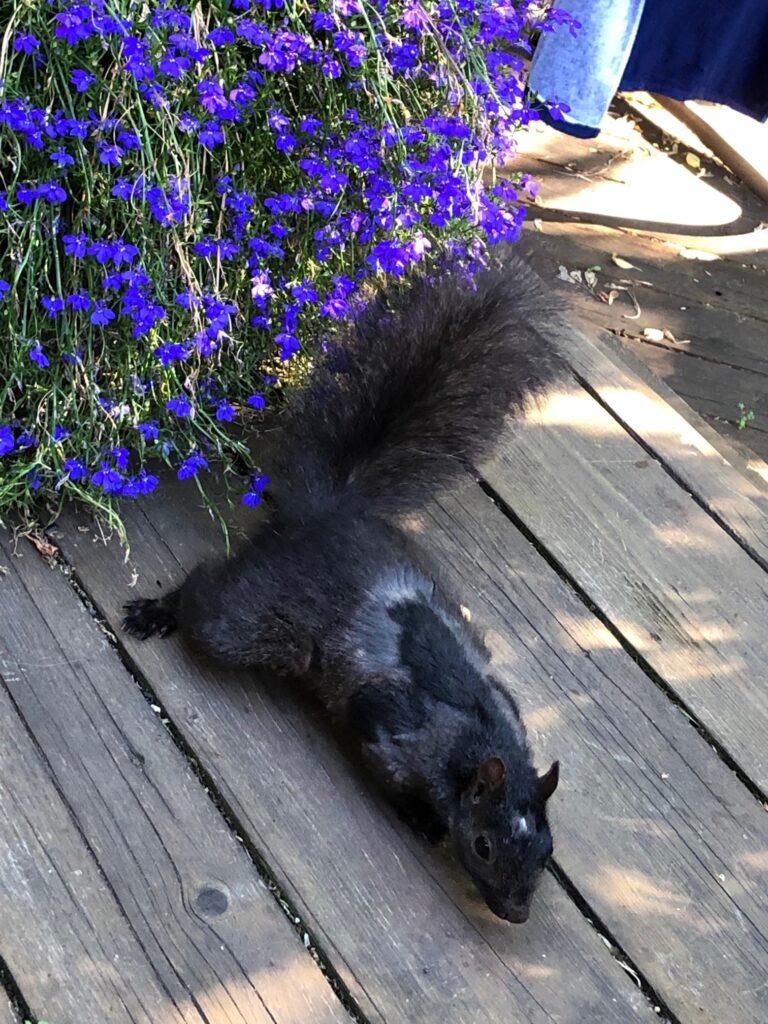
It was many weeks before I met Mimi’s babies, and then realized who is hers. The only way I can tell is that they romp around together and with her. All of the other squirrels are wary of each other and can be aggressive toward each other.
But Mimi and her babies – Baby Grey, Baby Brin, and the most recent one who I discovered is a sibling, Greysie – will tumble around with each other affectionately and playfully.
